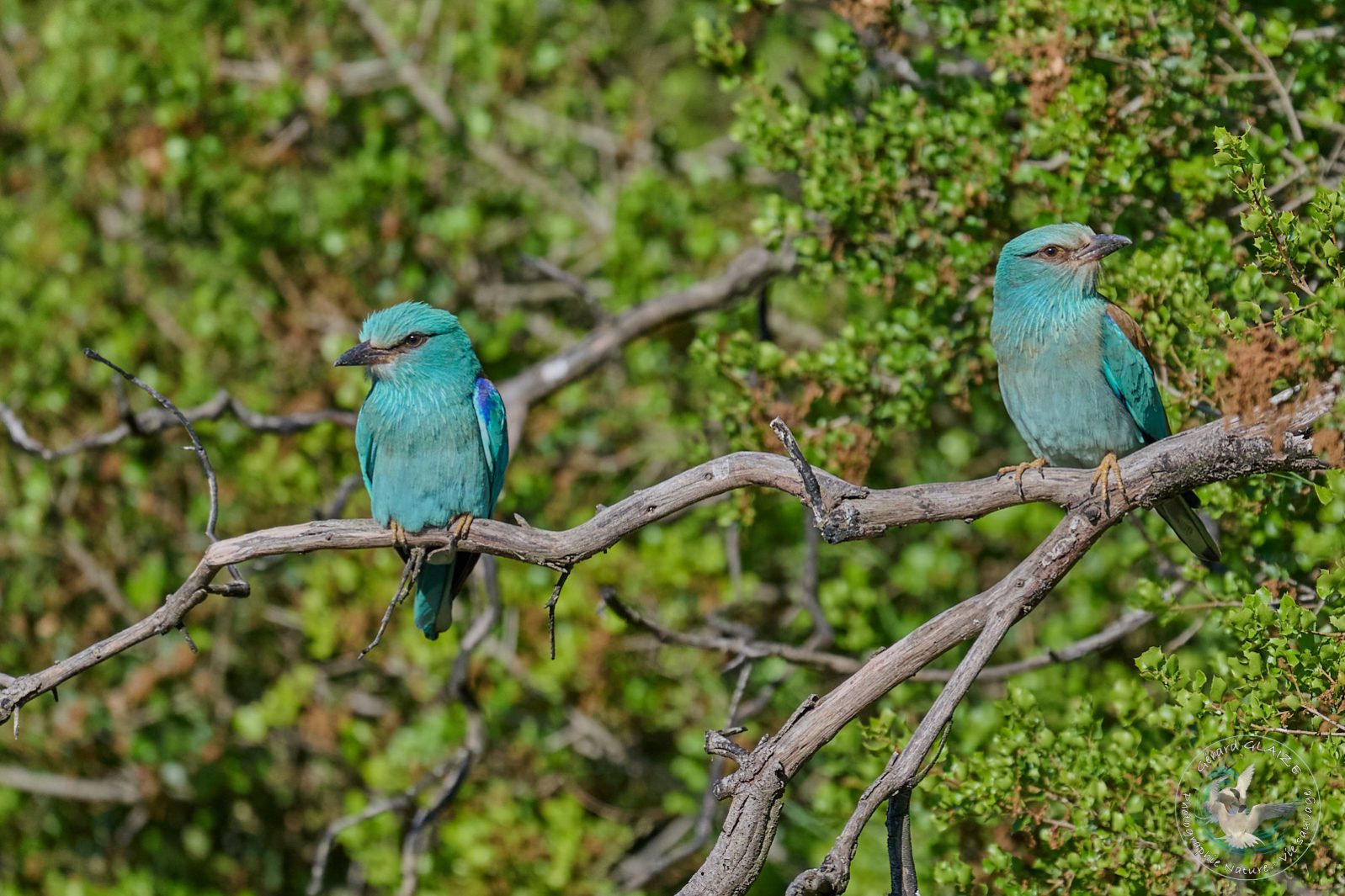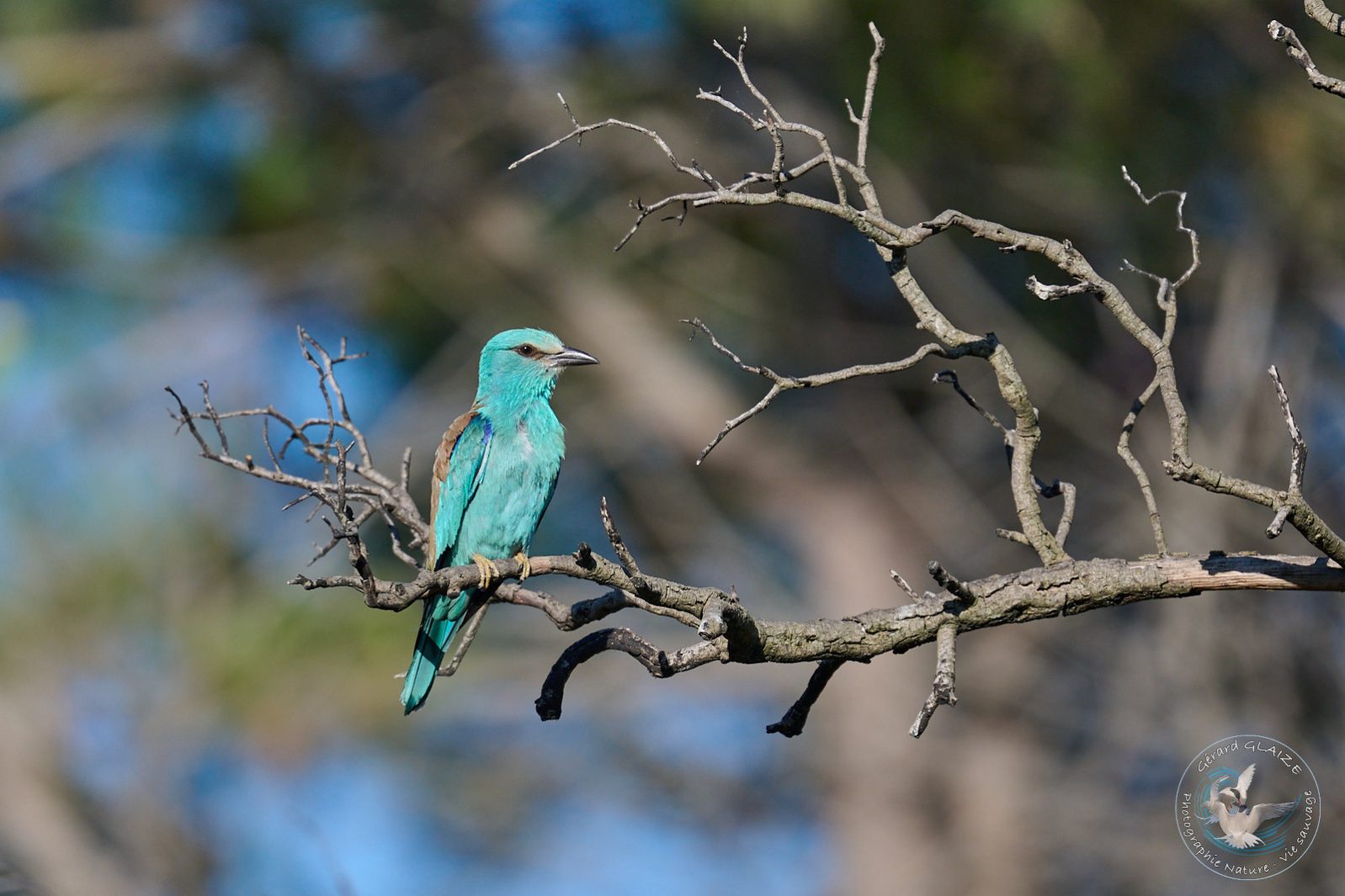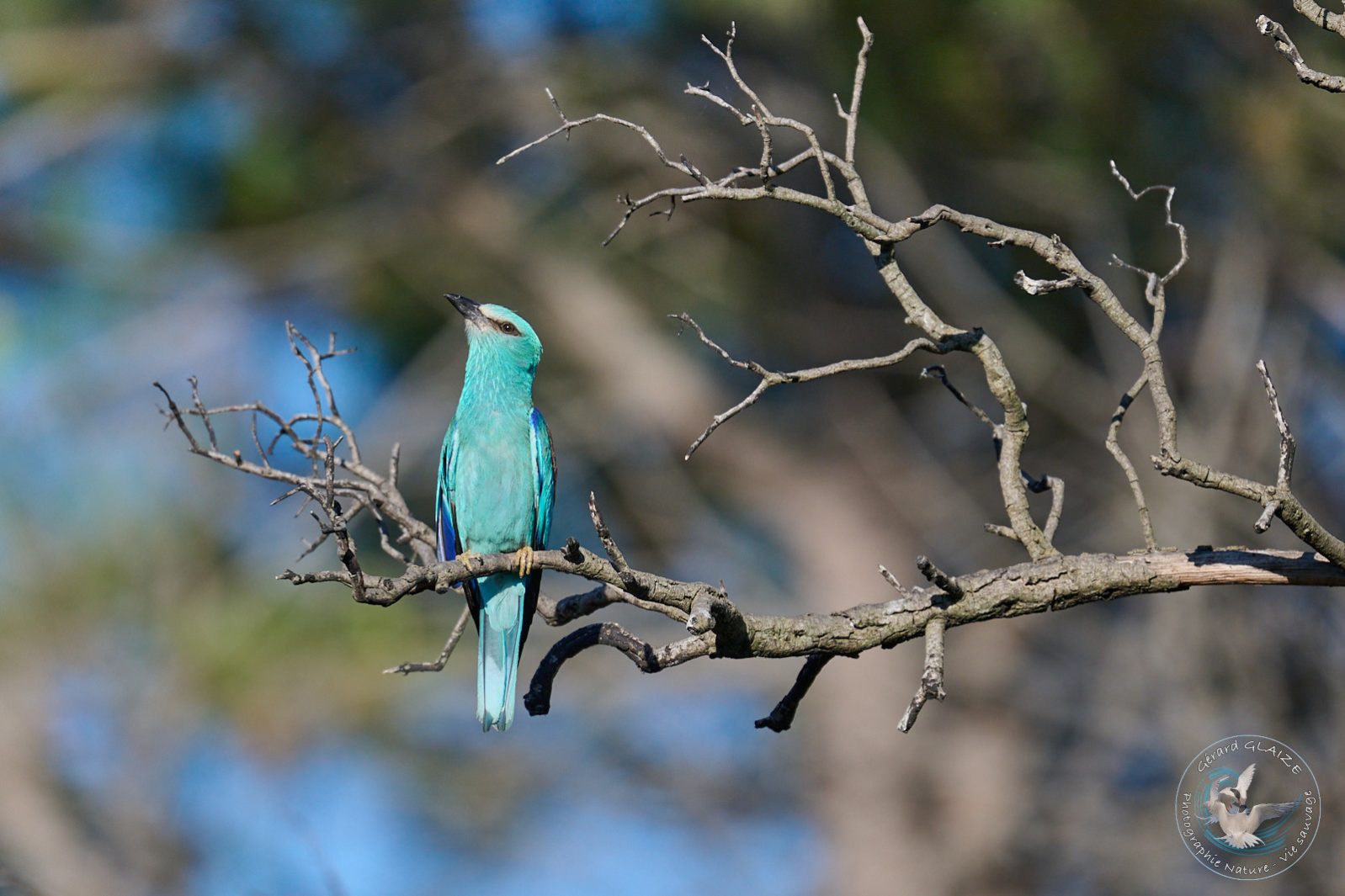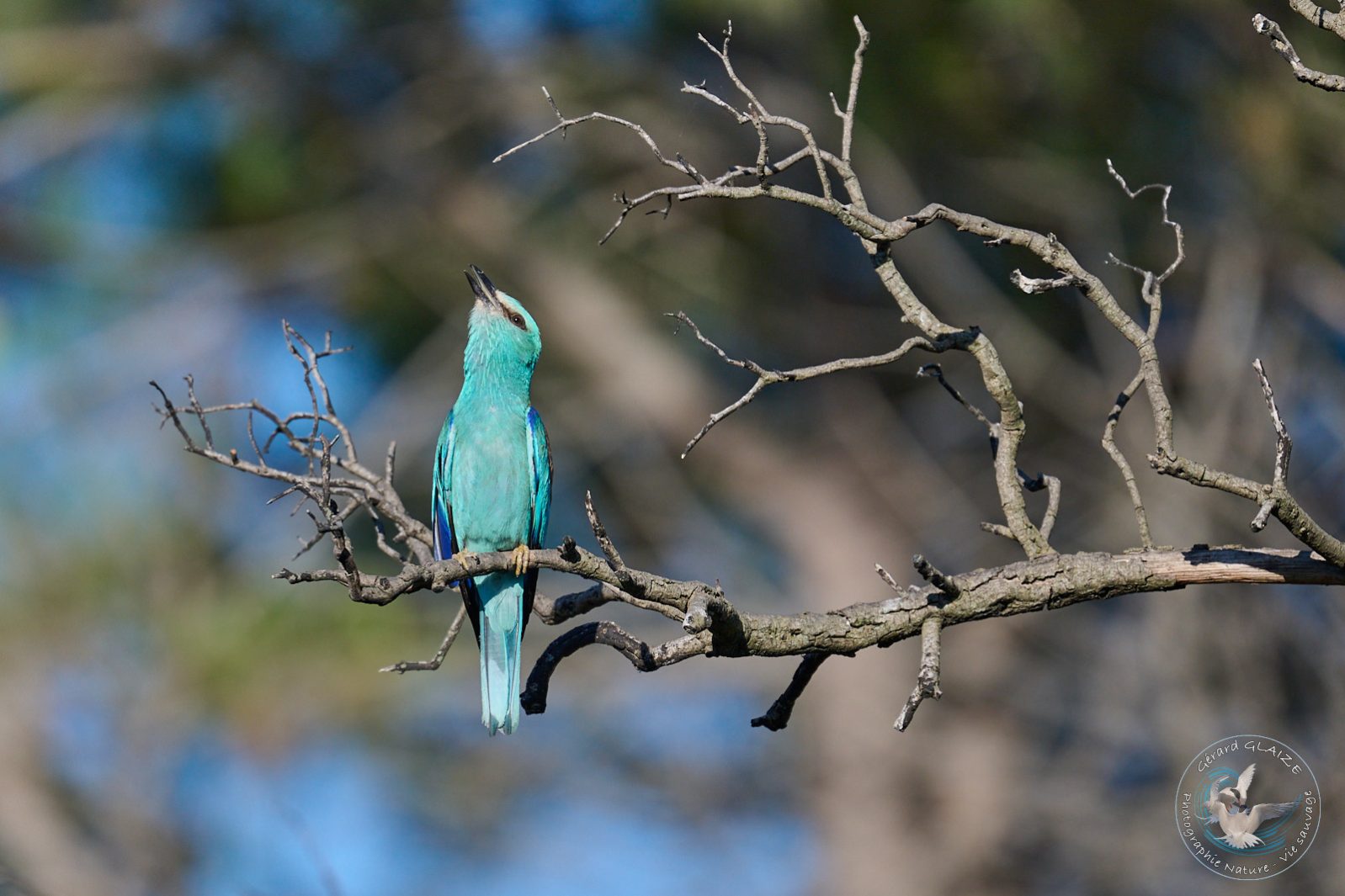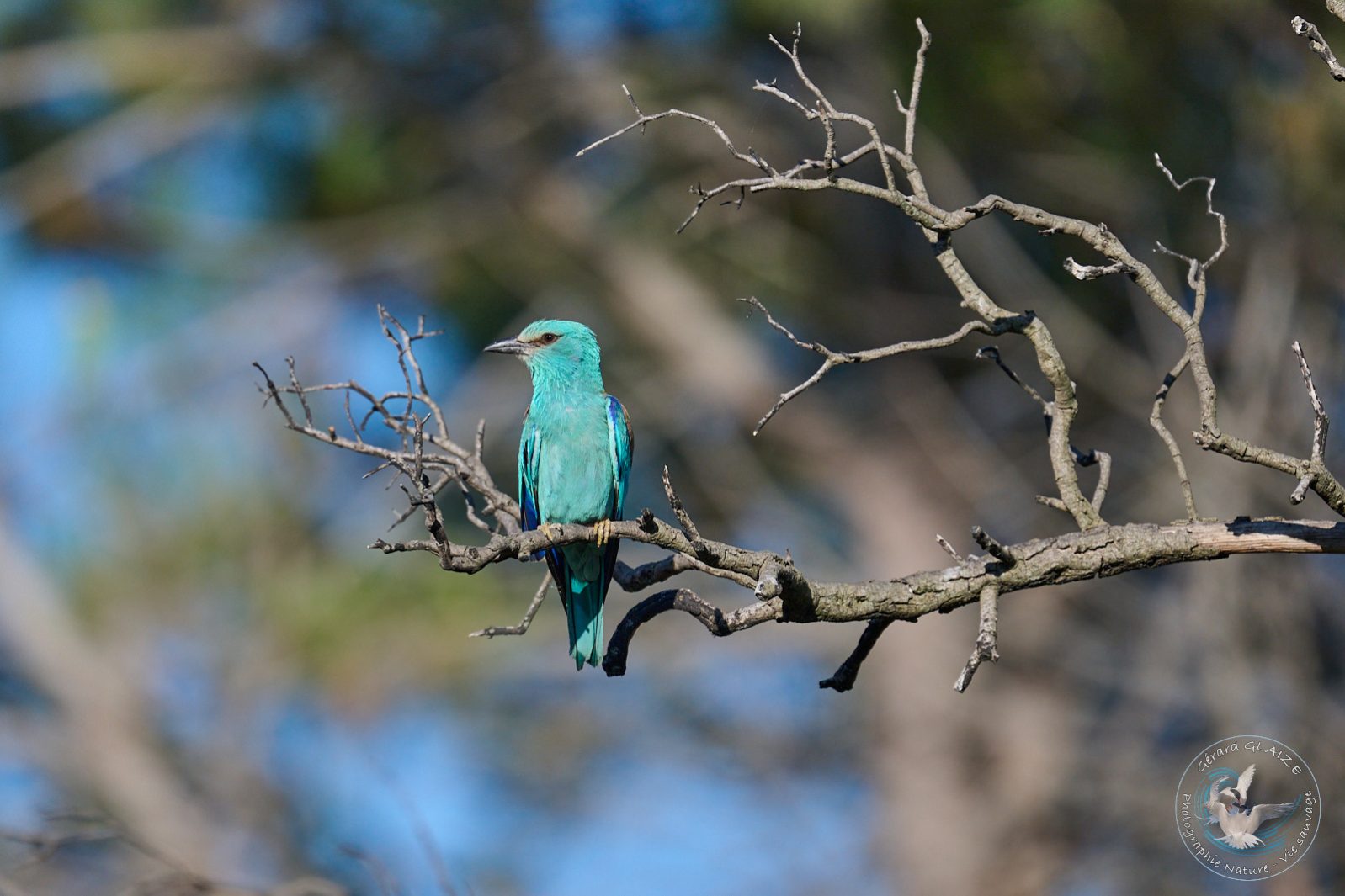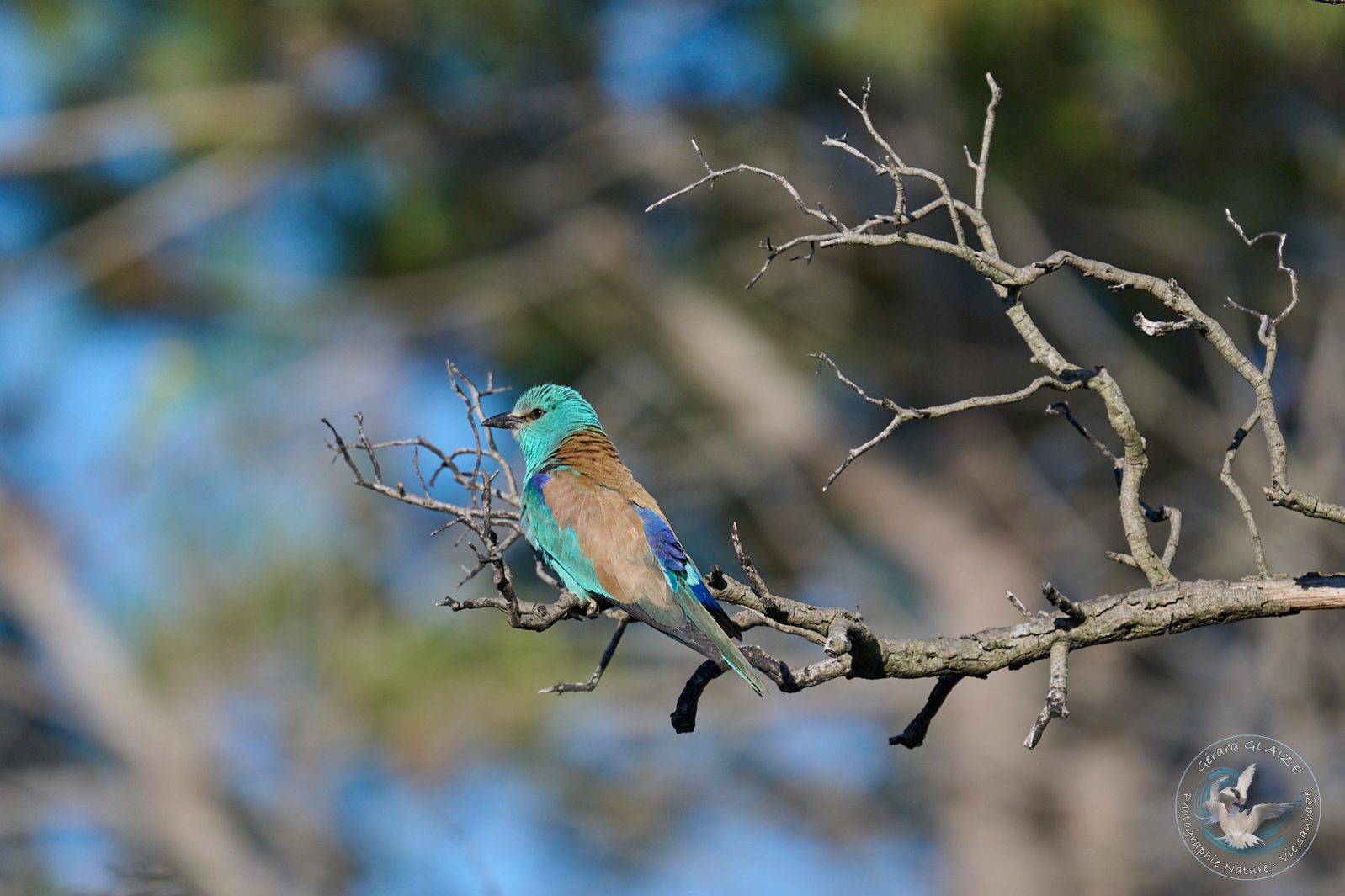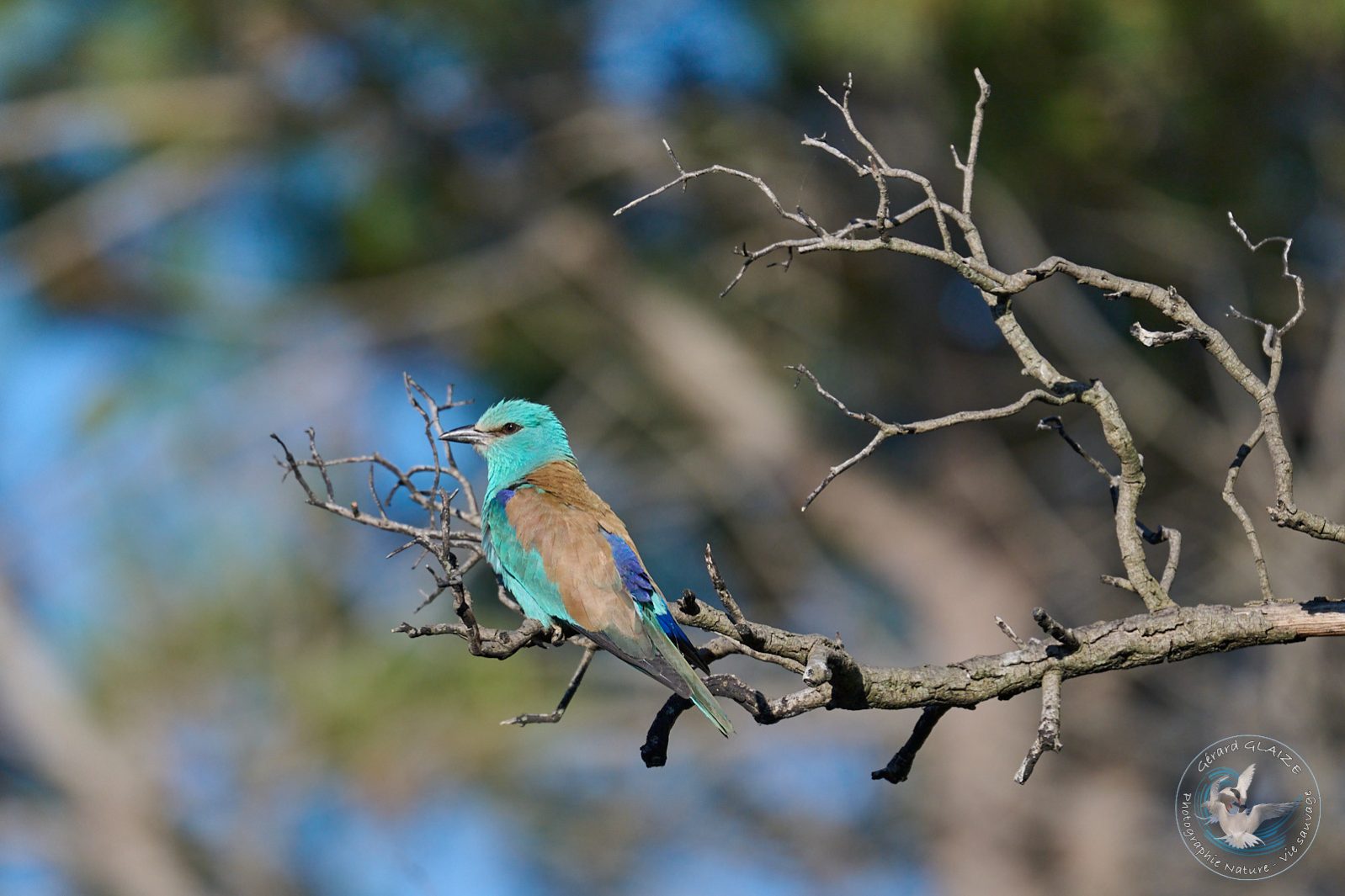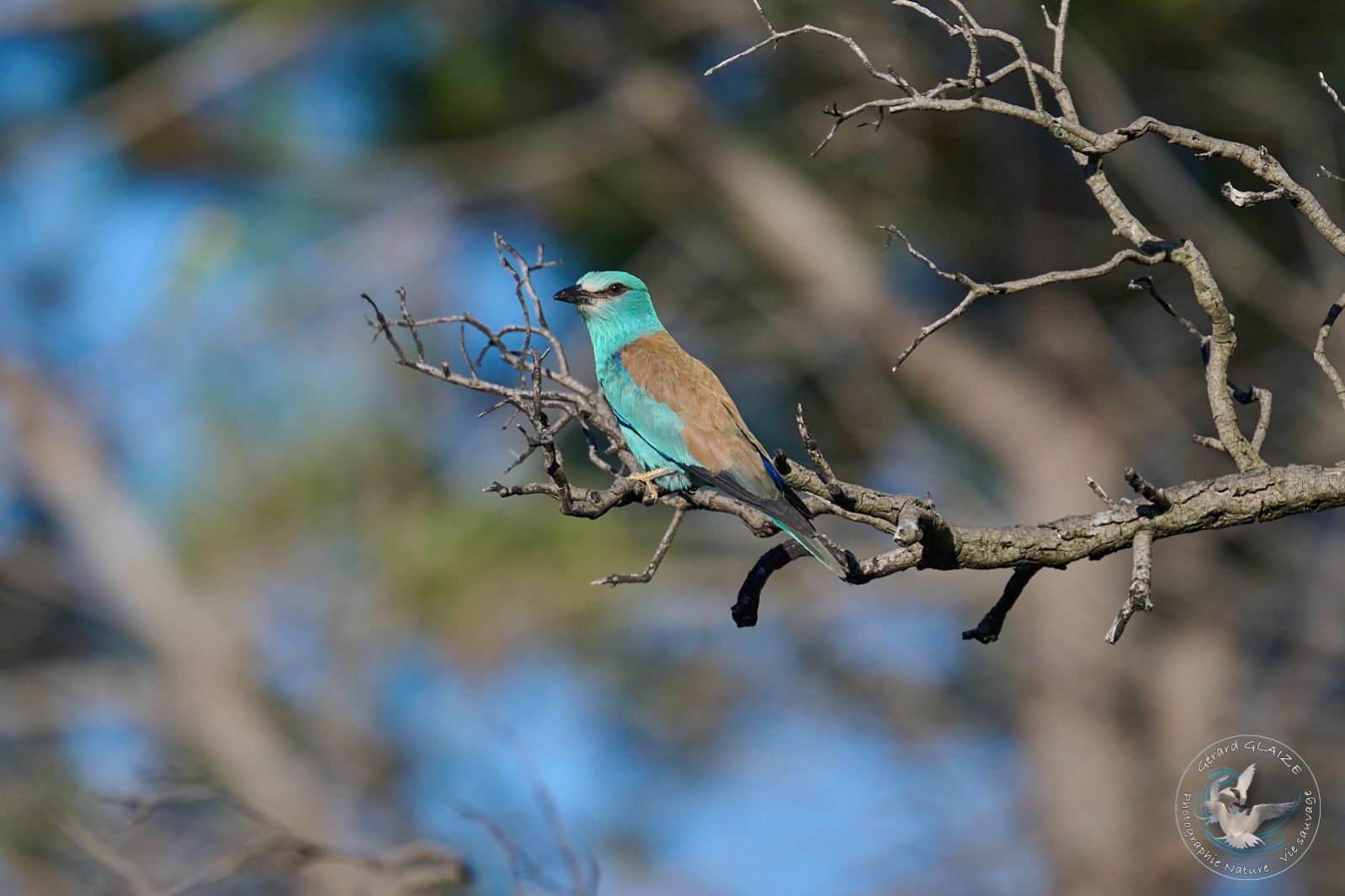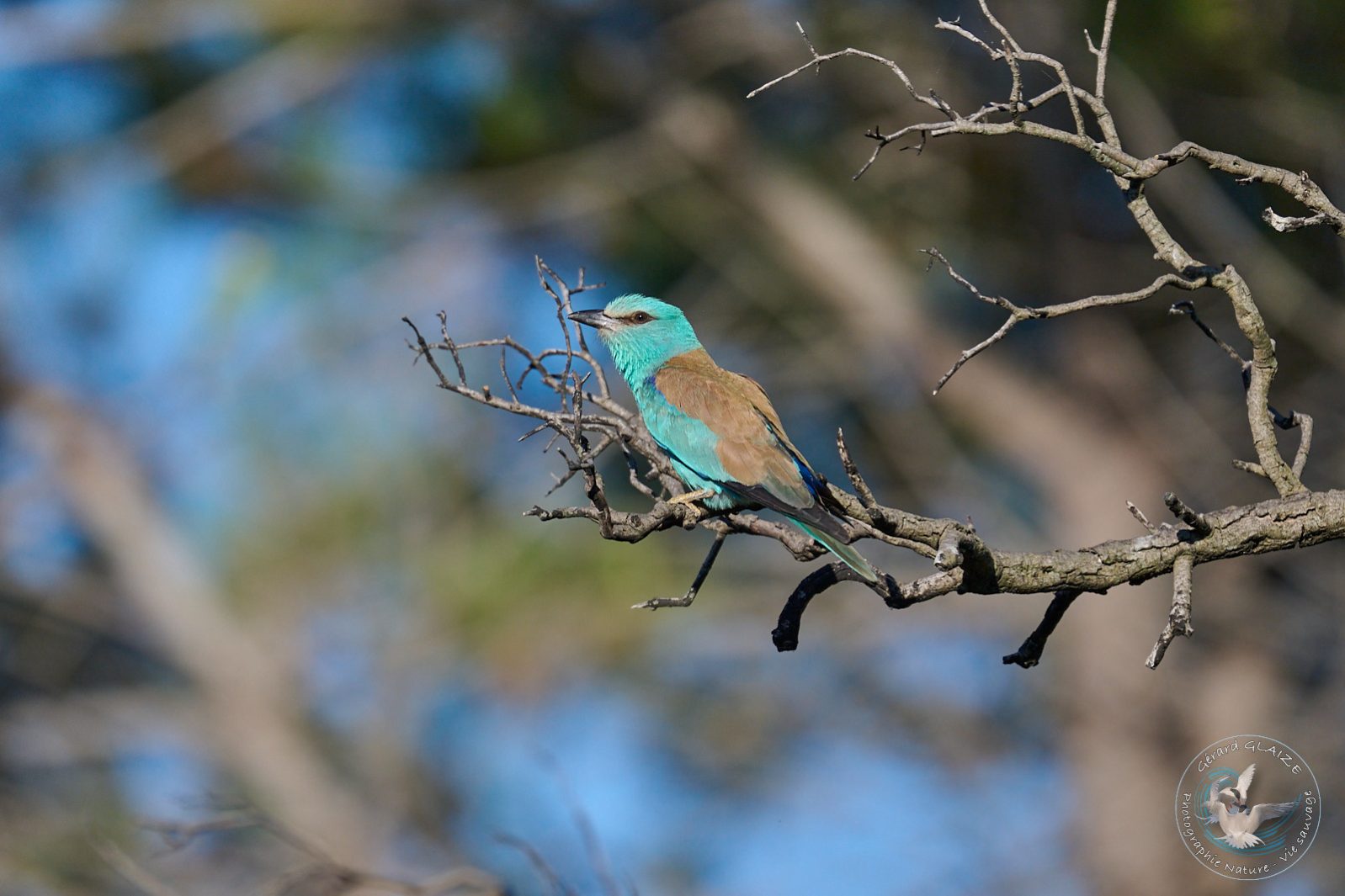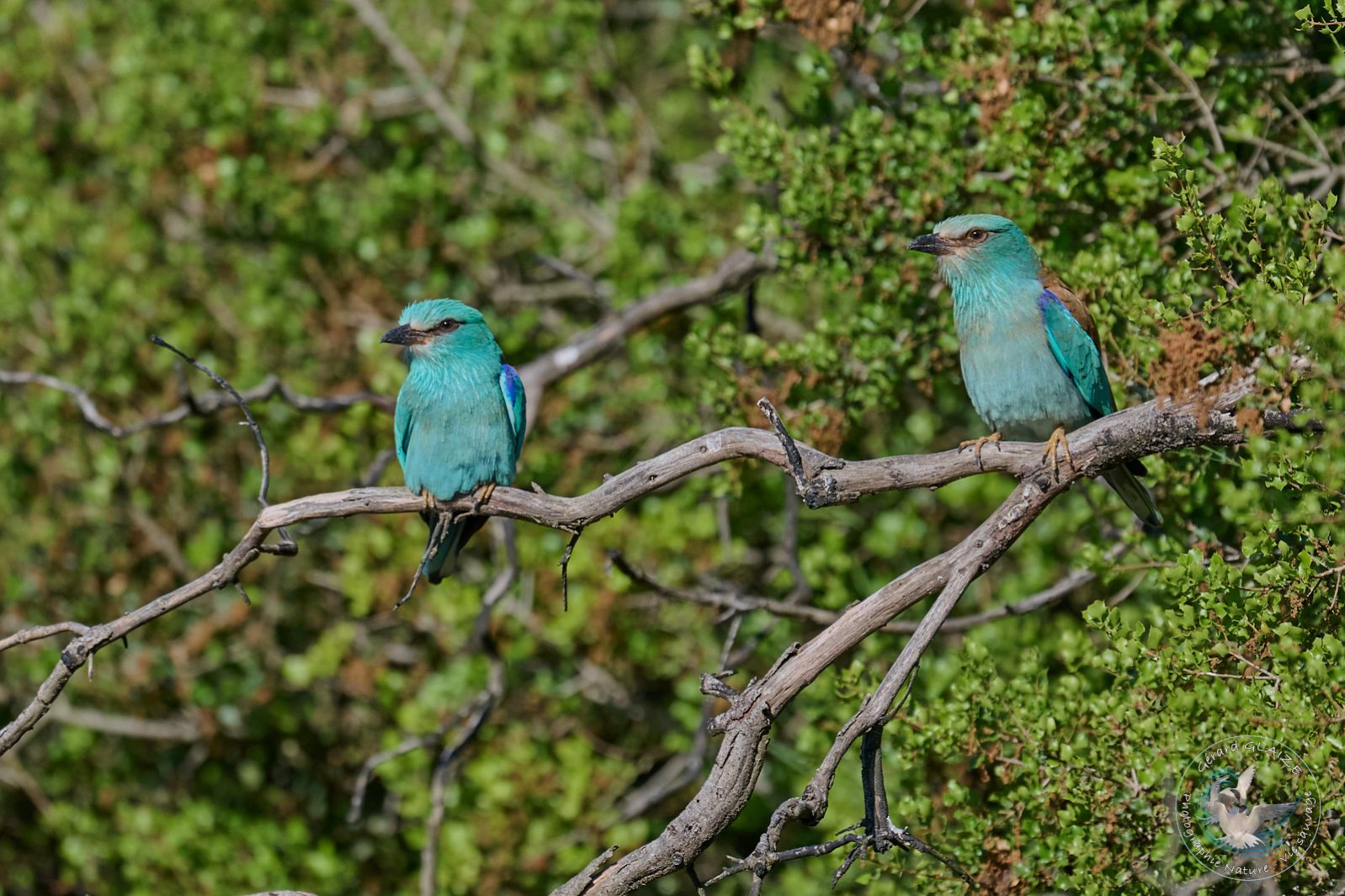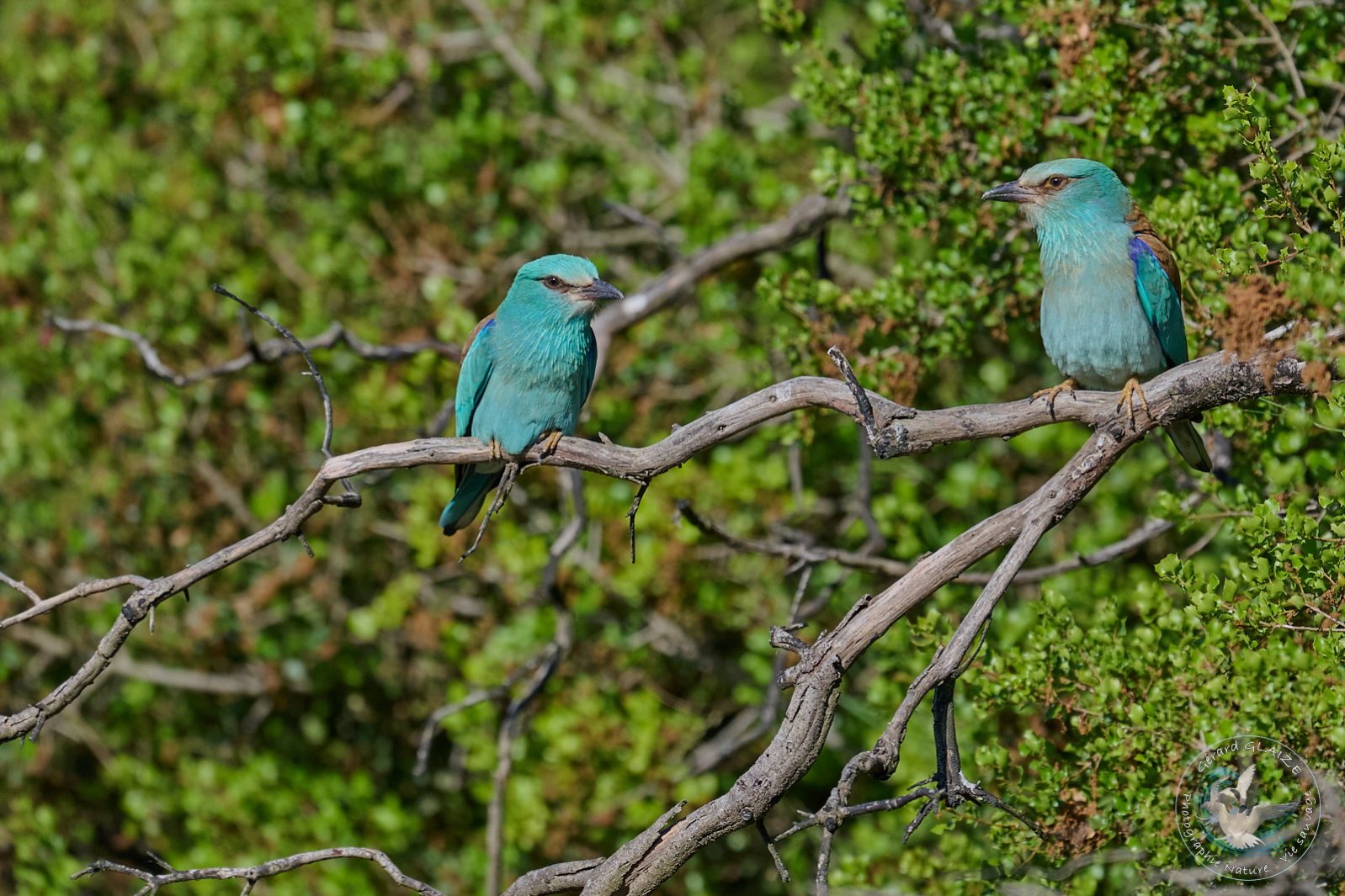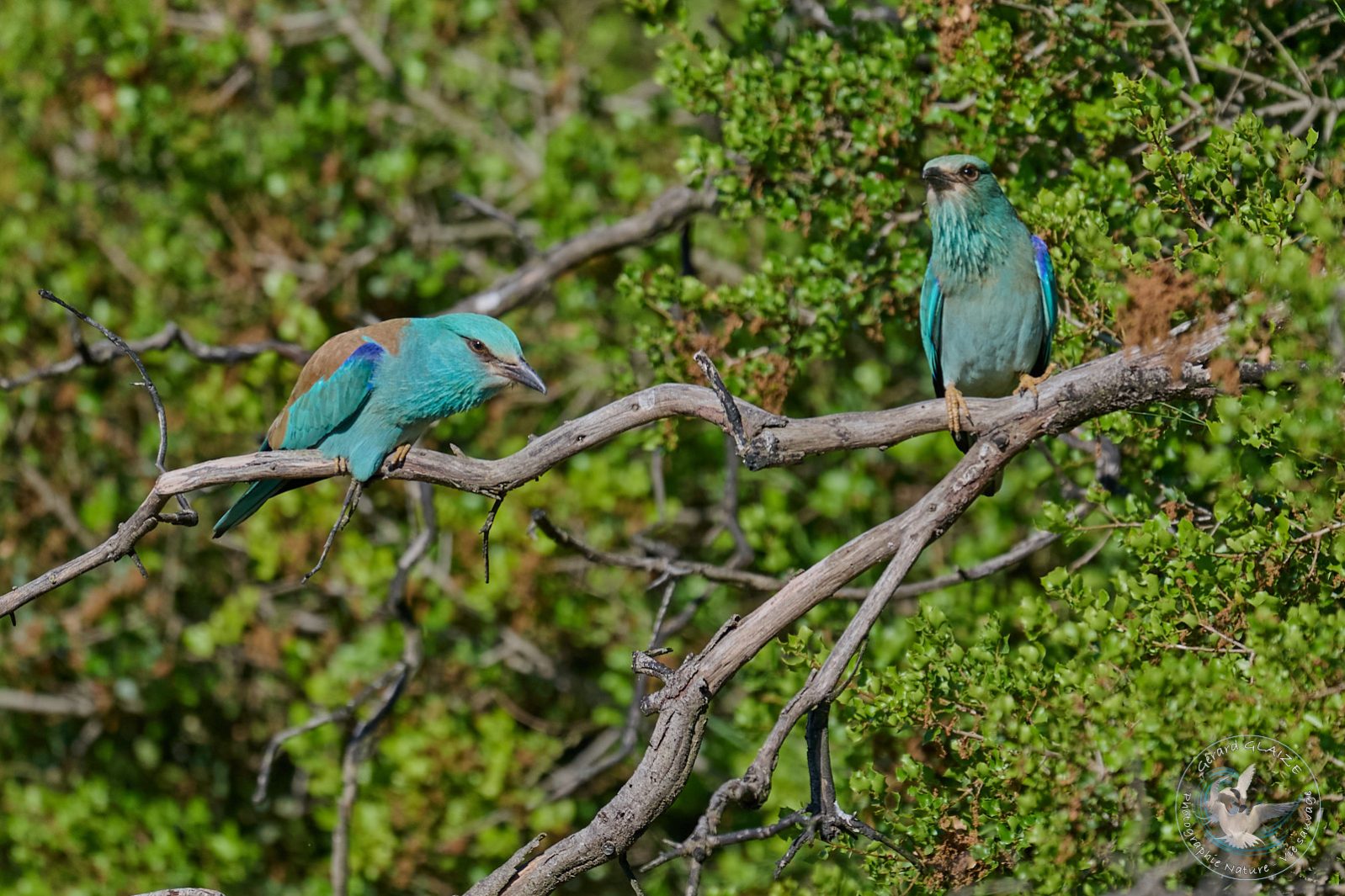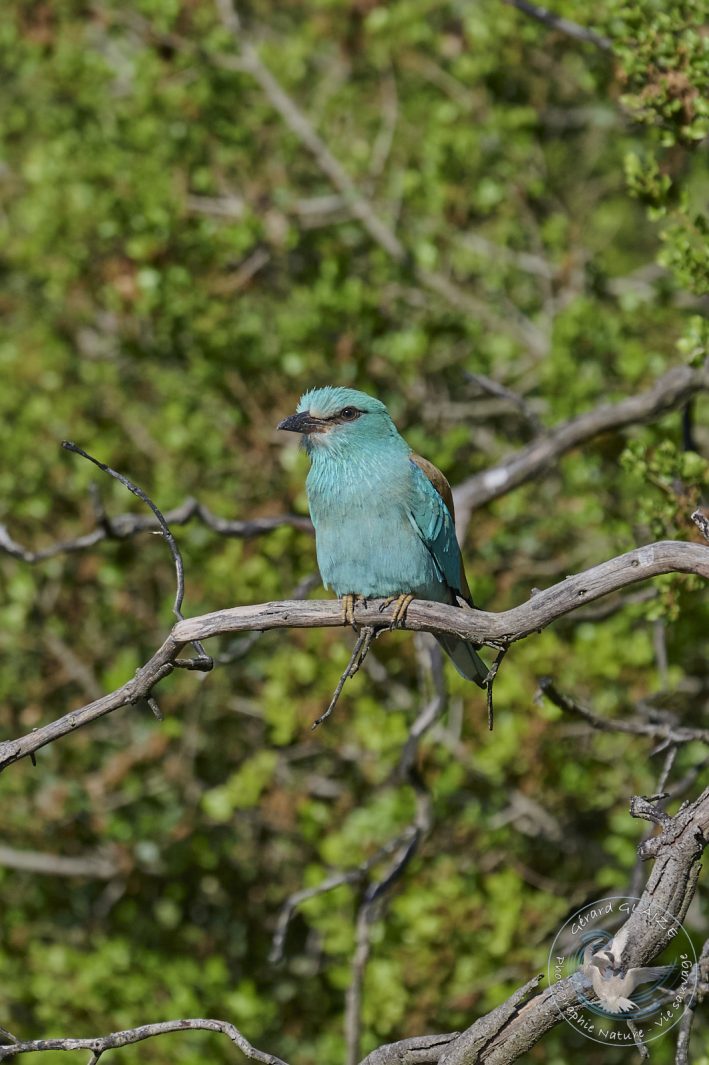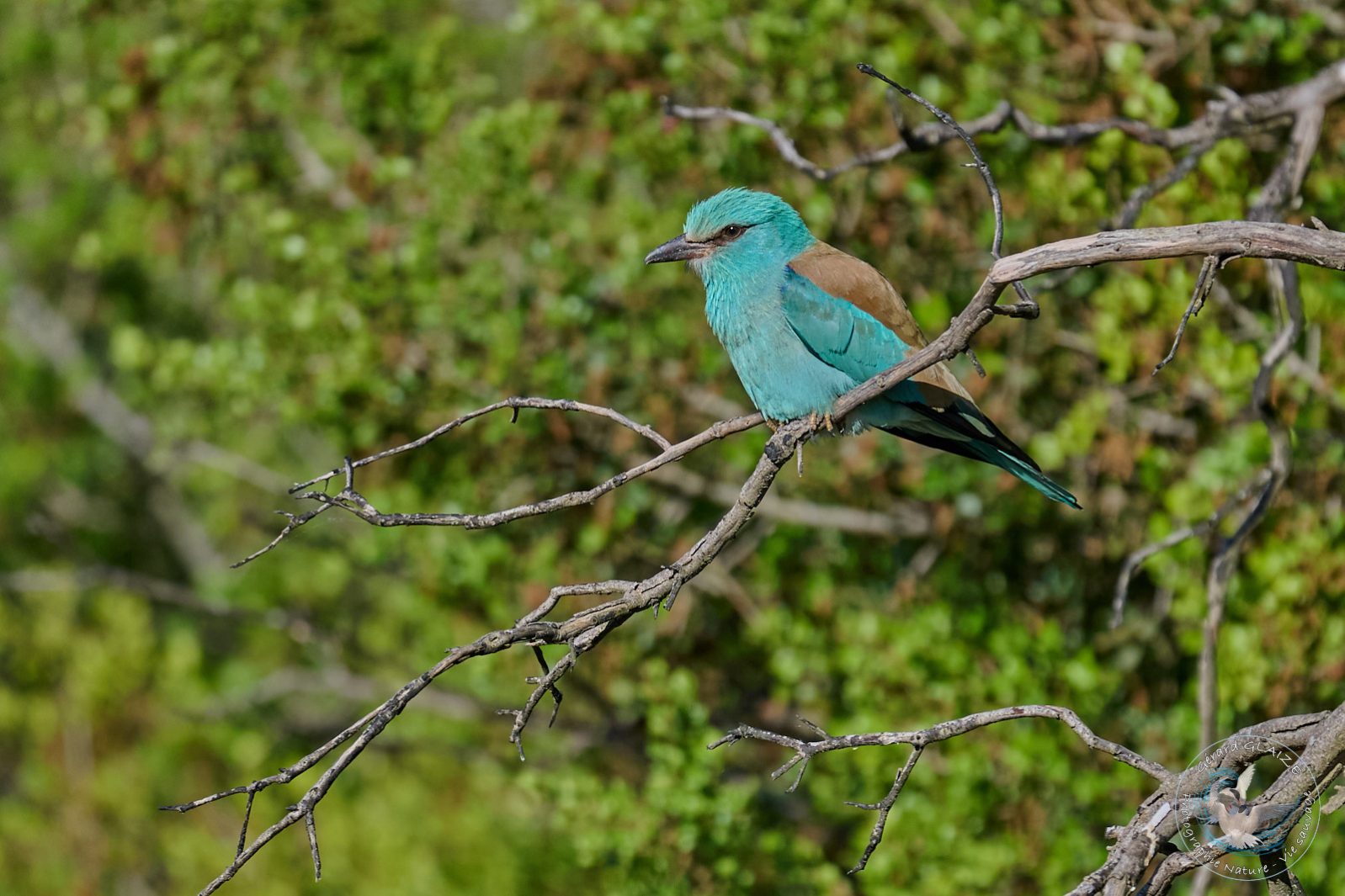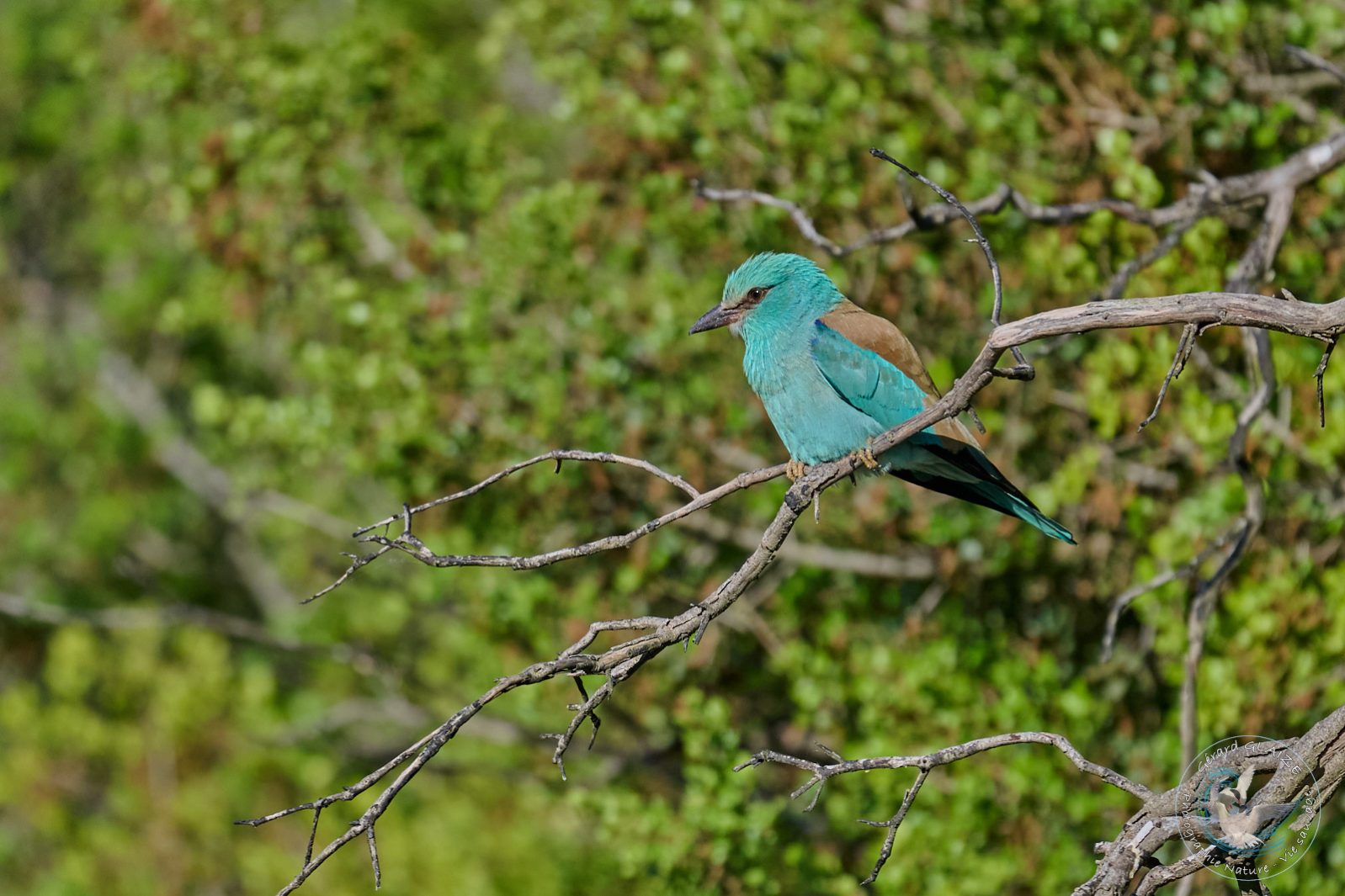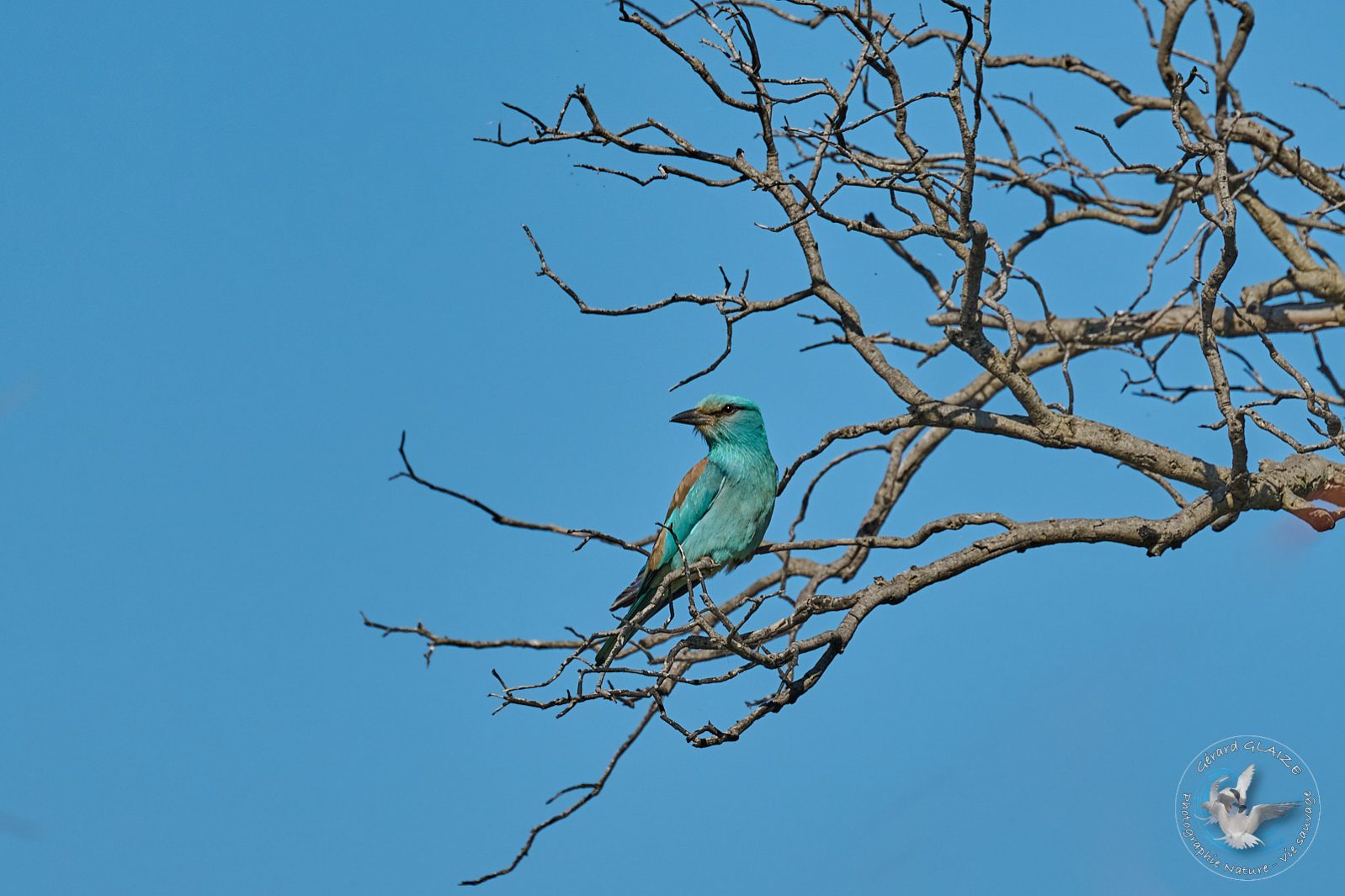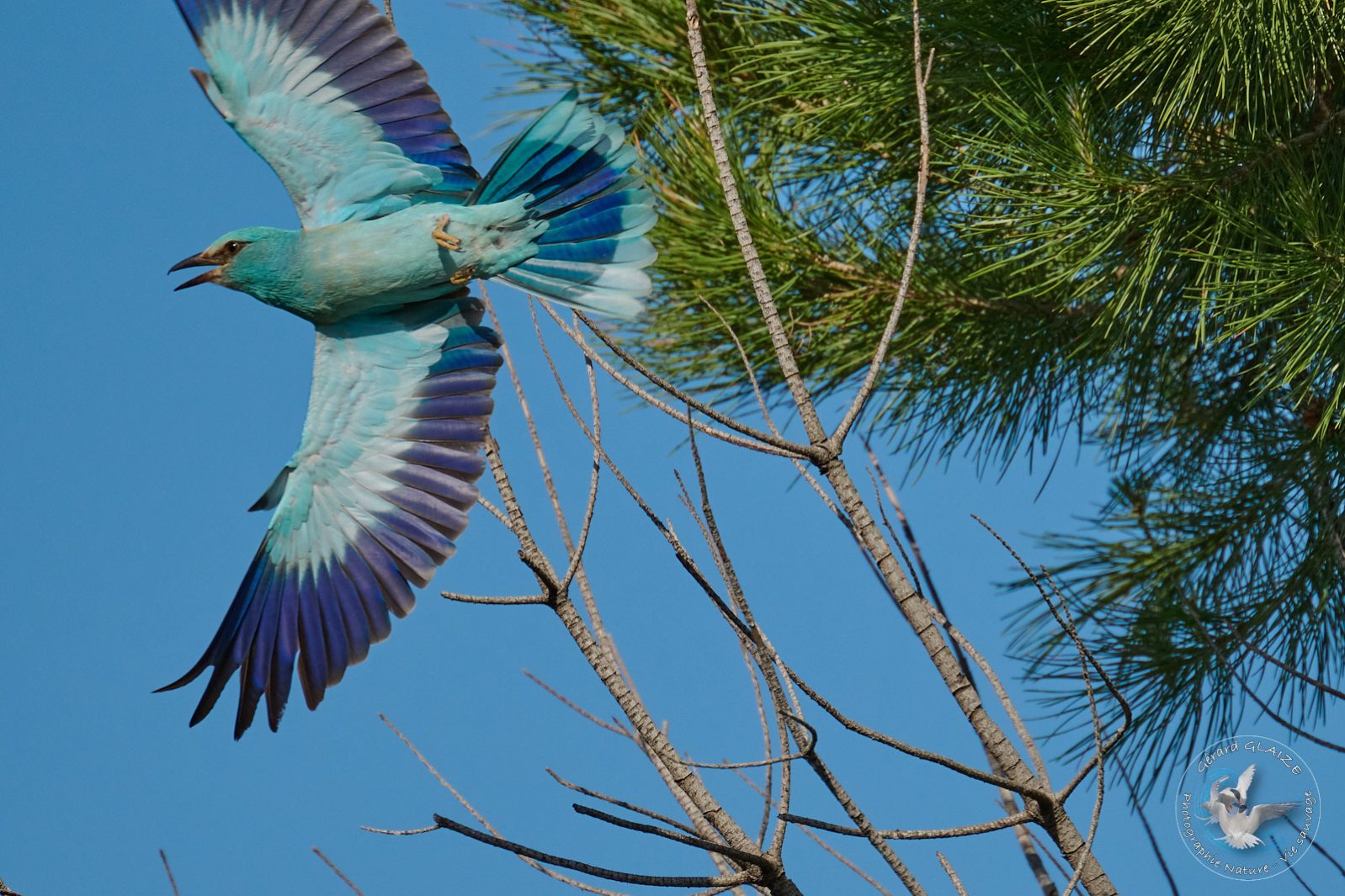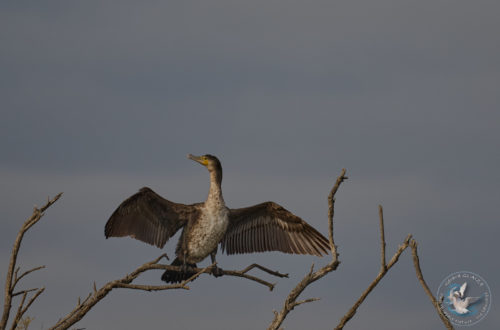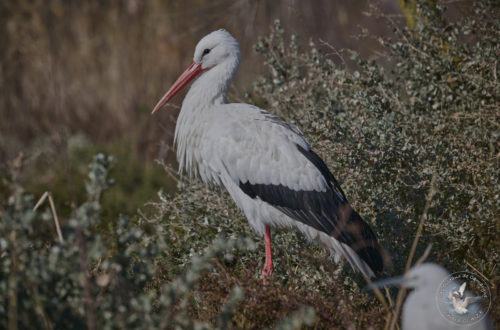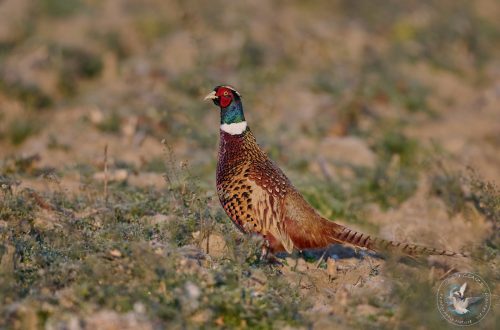European Roller
European Roller (Coracias garrulus) is also the only species of the Coraciidae family to live in France. It is a brightly colored bird. First of all, the plumage of the European Roller is distinctive, with its turquoise-blue coloration on the underside of the body and head, contrasting with the reddish-brown coat. The primary flight feathers are black. It has a thick, black beak.
The juvenile is duller; in fact, the blue is paler and shaded with green on the head and wings. Both sexes are similar.
This bird is unique and unmistakable.
European Roller
Scientific name : Coracias garrulus
Family : Coraciidae
Lenght : from 29 cm to 32 cm – Wingspan : from 60 cm to 73 cm
Weight : from 110 gr to 155 gr
IUCN Conservation Status : LC
Flight
The flight is direct with rapid wing beats. It is thus somewhat reminiscent of that of a small corvid like the jackdaw, with regular wing beats.
Habitat
This bird particularly frequents varied, non-homogeneous and sunny environments, orchards, woods, bushes and grassy wastelands with lookout posts. It can often be seen perched in a prominent position. They are solitary and very territorial and therefore do not hesitate to chase their fellow birds. However, they tolerate the proximity of other birds. I have occasionally observed them with colonies of European Bee-eaters.
The European Roller likes warm climates, which is why in France the European Roller is confined to the Provence-Alpes-Côte-d’Azur and Languedoc-Roussillon regions, however in recent years its range has spread up the Rhône Valley to the Drôme department.
Regime – Diet
The European roller is a carnivore. It feeds on large insects, snakes, lizards, amphibians, amphibians, and small rodents, usually caught on the ground after a dive from a perch.
Nesting
The European roller nests in particular in old woodpecker lodges dug in trees or in building holes. Roller also settles easily in nest boxes installed on a pylon or in a tree. This species is monogamous. Pairs form before arriving at the nesting site. The female lays 3 to 5 eggs in a clutch from late May to early July. Thus, the majority of clutches take place in the first week of June. Incubation lasts 17 to 20 days, so hatching takes place towards the end of June and the young take flight in mid-July (average dates observed in the South of France).
Migration
It is a “strict” migratory species that completely leaves its Eurasian breeding range to then reach sub-Saharan Africa, a round trip of around 10,000 km. Arrival is late. The vast majority of individuals arrive during May. Departures to wintering sites are gradual and would begin from the beginning of August until mid-September.
Protection
The European Roller has enjoyed total protection in France since the ministerial decree of April 17, 1981, relating to birds protected throughout the country. It is therefore prohibited to destroy, mutilate, capture or remove it, to intentionally disturb or naturalize it, as well as to destroy or remove eggs and nests, and to destroy, alter or degrade its environment. Whether alive or dead, it is also prohibited to transport, peddle, use, possess, sell or purchase it.
Cry
The voice is raspy and similar to that of a corvid. Alarm and contact calls are therefore harsh, raspy, nasal croaks “rak-ac”, uttered briefly or in series. The calls and song, however, evoke those of the magpie, the jay and the crow.


